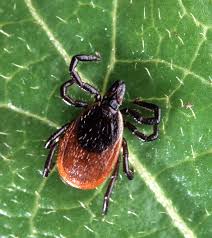The Rise of Lyme Disease: What You Need to Know

Introduction
Lyme disease has emerged as a significant public health concern in recent years, with the number of reported cases steadily increasing across various regions, particularly in North America and Europe. This tick-borne illness, caused by the bacterium Borrelia burgdorferi, underscores the importance of understanding its symptoms, early detection, and preventive measures. As climate change continues to influence the habitats of ticks, awareness and education regarding Lyme disease become ever more critical to mitigate risks.
Understanding Lyme Disease
Lyme disease is primarily transmitted to humans through the bite of infected black-legged ticks, commonly known as deer ticks. Symptoms often present in three stages: early localized, early disseminated, and late disseminated. Initially, patients may notice a characteristic skin rash known as erythema migrans, which appears as a ‘bull’s-eye’ around the bite site. Early symptoms can include fatigue, fever, and muscle aches, while later stages can lead to more severe health issues such as neurological problems or joint pain.
Current Statistics and Trends
According to the Centers for Disease Control and Prevention (CDC), Lyme disease has seen a marked increase in reported cases, with estimates suggesting around 300,000 new cases each year in the United States alone. States such as New York, Pennsylvania, and New Jersey are experiencing the highest incidence rates. A recent report showed a 12% increase in cases from the previous year, prompting health officials to issue warnings and guidance to residents in high-risk areas.
Prevention and Awareness
Preventing Lyme disease largely involves reducing exposure to tick habitats. Health experts advise individuals to wear protective clothing, use insect repellent that contains DEET, and perform regular tick checks after spending time outdoors, particularly in wooded or grassy areas. Public health campaigns are increasingly focusing on educating communities about the risks and prevention methods. Additionally, research into Lyme disease is gaining momentum, with ongoing studies aimed at improving treatment options and vaccine development.
Conclusion
As Lyme disease continues to pose health risks globally, increased public awareness and education are essential for prevention and early detection. The rising number of cases not only highlights the importance of individual protective measures but also the need for community-level interventions and public health initiatives. With better awareness and proactive strategies, the impact of Lyme disease can be significantly reduced, ensuring health and safety for at-risk populations.
